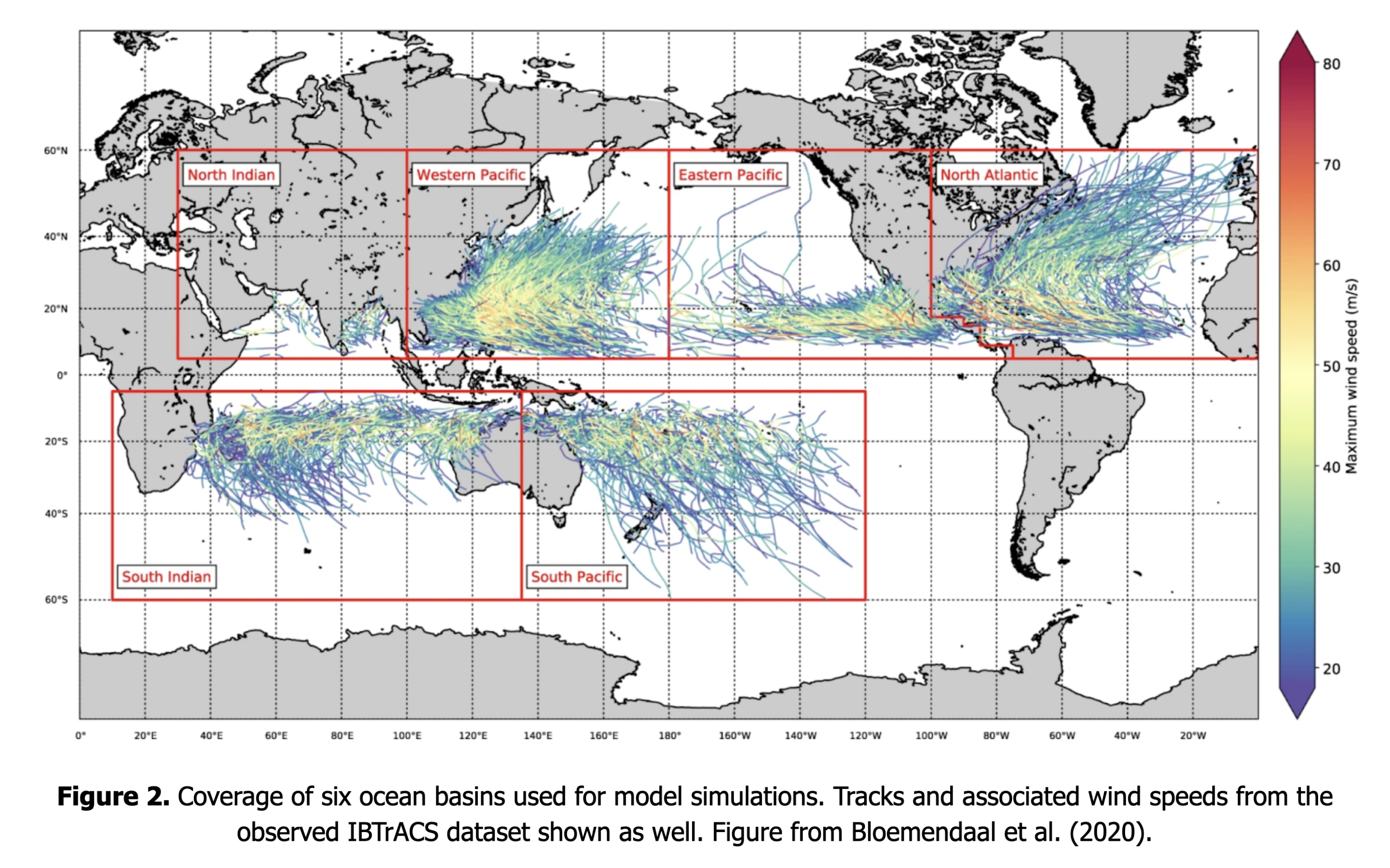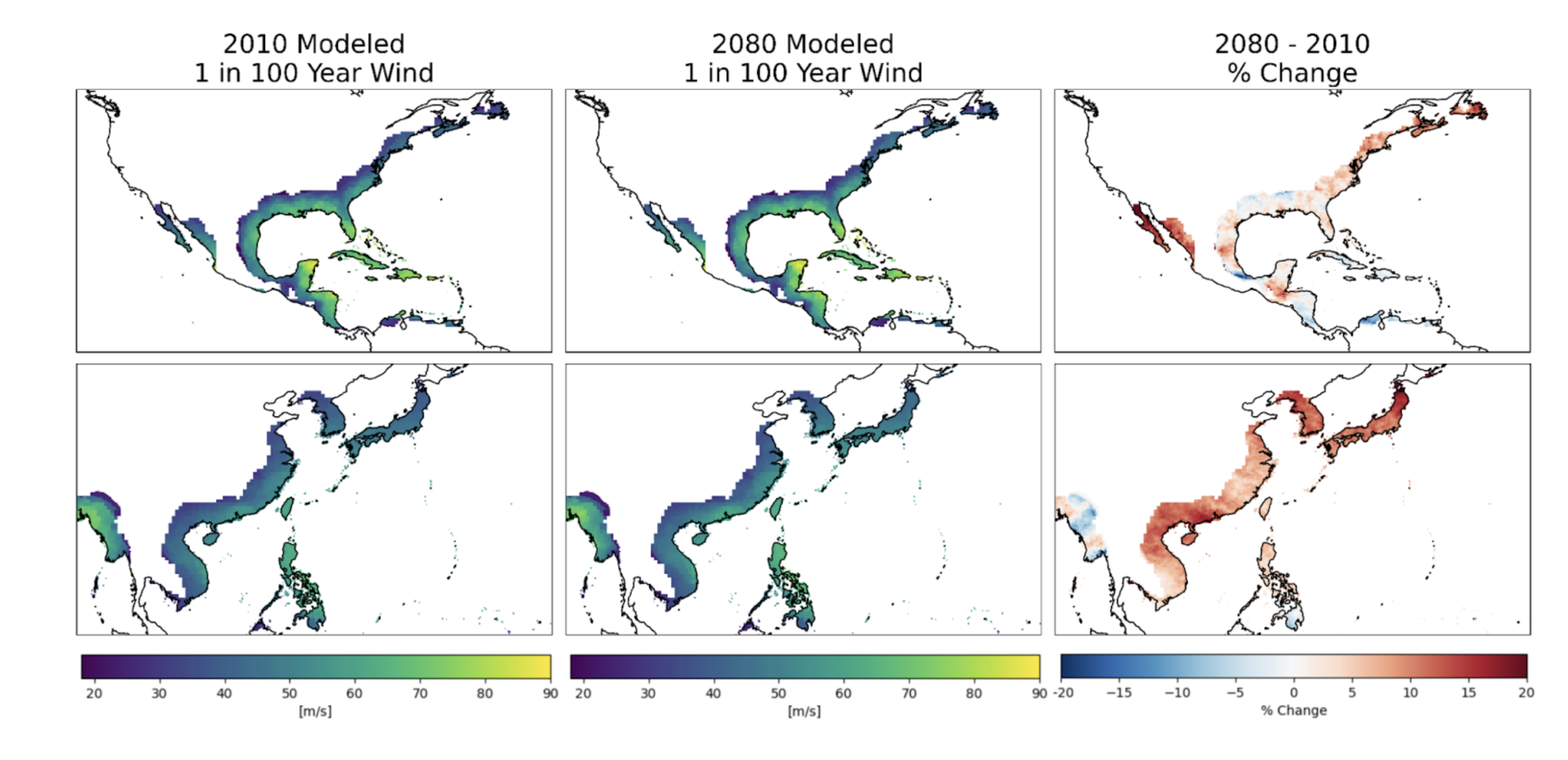Cyclone Helene and the Myth of History

Last week, Hurricane Helene tore through the southeastern U.S., devastating North Carolina. The storm was the deadliest since Hurricane Katrina—over 200 lives lost and approximately $160 billion in damages—demonstrating that even places described as “climate havens” are not safe from the growing frequency and intensity of extreme weather.
With family friends and many colleagues in Asheville and across the Carolinas and Southeast, I’m painfully reminded of the personal and human cost of these types of events. But as the region begins to rebuild, Helene needs to serve as a wake-up call, forcing us to think deeply about climate awareness, adaptation, and the need for better preparedness.
One key to this preparedness is advanced cyclone modeling, a tool that remains underutilized, despite its potential to improve disaster response. Sust Global and other companies are developing sophisticated models that provide probabilistic forecasting data that could help mitigate the impact of such storms over the coming decades. Whilst there is a clear emphasis from many governmental agencies to integrate climate risk tools (e.g. some brilliant conversations I had with NOAA folks at New York Climate Week, who are determined to engage with the private sector to build better approaches to modeling, adaptation and mitigation), there remains a disconnect between legacy climate hazard maps, national policy frameworks, and localized adaptation efforts. Bridging this gap would make all the difference in future disaster resilience.
The Myth of Climate Havens
Reading Louie Woodall’s Climate Proof newsletter summarizing aspects of the storm, I learned many had seen Asheville as a so-called “climate haven” alongside Duluth, Minnesota, and Ann Arbor, Michigan. Obviously, this is a narrative based upon a regression of what has happened in the past, not what happens in the future, and clearly articulates the need for us to get real about using probabilistic climate modeling of future conditions. Jeffrey Schlegelmilch from Columbia University’s National Center for Disaster Preparedness, calls ”[the concept of a climate haven] complete and utter nonsense.”
Helene underscores a broader truth: No city is immune from climate risks. In the future, we must better anticipate these events and equip vulnerable communities with the tools they need to withstand them.
The intensity of Hurricane Helene was significantly driven by rising ocean heat content, a direct result of climate change. Warm waters in the Gulf of Mexico and Caribbean Sea provided a high-energy environment that fueled the storm’s rapid intensification. Ocean heat content, particularly the depth of warm water, is a key factor that allows hurricanes to draw more energy and maintain their strength as they approach land. In Helene’s case, unusually high sea surface temperatures of up to 31°C created “a source of high-octane fuel” for the storm .
Research shows that global warming has increased ocean heat content, leading to stronger and more frequent hurricanes like Helene. These high-energy environments not only allow storms to strengthen more quickly but also prolong their intensity, making them more dangerous as they approach populated areas. Helene’s rapid intensification near landfall is consistent with predictions that warmer seas will lead to more intense hurricanes in the future (3). Additionally, climate change may have caused up to 50% more rainfall in parts of Georgia and the Carolinas during Helene, making the storm even more devastating than it would have been in a pre-climate change world.
The combination of these factors further exacerbates the destructive power of storms like Helene, reinforcing the link between climate change and extreme weather events.
Limits of today’s data, and it’s impact on adaptation
While adaptation measures—such as upgrading infrastructure, enforcing stricter building codes, and relocating vulnerable populations—are essential for addressing the impacts of climate change, they are not sufficient on their own. Many regions around the world, as Helene demonstrated, face the risk of being blindsided by extreme weather events, which can exceed the capacity of adaptation efforts.
To effectively combat these challenges, local governments and businesses need access to data that projects the likely intensity and frequency of future storms. This information can empower them to take preemptive actions—whether reinforcing critical infrastructure, adjusting zoning regulations, or considering managed retreat for the most vulnerable areas. We must prioritize getting these tools into the hands of decision-makers in cities and communities as quickly as possible.
In this context, advanced climate modeling plays a critical role in understanding and preparing for future risks. Sust Global has developed a proprietary cutting-edge cyclone model. Our multi-scenario cyclone risk dataset incorporates the latest CMIP6-based cyclone track simulations with a proprietary wind speed bias-correction methodology to enable more accurate assessment of local exposure from tropical and extratropical cyclones.
We use inputs from leading models such as the Synthetic Tropical Cyclone Generation Model (STORM), allowing for highly detailed cyclone forecasting. This model, first proposed by researchers at the Vrije University of Amsterdam, simulates the genesis, trajectory, and intensity of tropical cyclones globally, integrating multiple climate scenarios.
By developing advanced bias correction techniques, Sust Global uses inputs to also refine these projections to align more closely with observed data, offering an incredibly accurate view of potential future cyclone impacts.
 By accessing data that projects the likely intensity and frequency of future storms, local governments and businesses can be more confident in taking preemptive measures—whether that’s reinforcing critical infrastructure, adjusting zoning regulations, or even considering managed retreat for the most vulnerable areas. We have to get these tools into the hands of the people on the ground in these cities and communities as quickly as possible.
By accessing data that projects the likely intensity and frequency of future storms, local governments and businesses can be more confident in taking preemptive measures—whether that’s reinforcing critical infrastructure, adjusting zoning regulations, or even considering managed retreat for the most vulnerable areas. We have to get these tools into the hands of the people on the ground in these cities and communities as quickly as possible.
Bridging the Gap Between Policy and Implementation
government agencies, particularly at the federal level, are increasingly adopting climate risk assessment tools, and are beginning to see the tremendous value of third-party data and AI-driven models. However, a gap persists between the policy frameworks established in Washington and the on-the-ground implementation of adaptation and response strategies. This disconnect often means that while high-level policies may be in place, local governments may lack the resources, data, or expertise to act on them effectively.
Take Helene’s impact on Asheville, for example. As the storm approached, local officials struggled to assess the vulnerability of the city's aging infrastructure, much of which had been designed decades ago without consideration for current climate risks. While national agencies like FEMA provide crucial disaster relief and guidance, it’s up to local authorities to interpret and apply these frameworks to their specific contexts.
Why Cyclone Modeling is Essential for Preparedness
Climate models are more than just theoretical tools—they have real-world applications that could save lives and reduce economic losses. Sust Global’s model can simulate thousands of years of cyclone activity, providing insights into return periods for storms of various intensities. For instance, it can project the likelihood of a Category 4 storm hitting a specific location over a given time horizon. This kind of scenario-based analysis allows cities and businesses to prepare for worst-case scenarios rather than relying on outdated risk models based purely on historical data.
Cyclone modeling also informs financial risk assessments, enabling businesses and insurers to better understand their exposure to extreme weather events. By analyzing projected wind speeds, flood risks, and potential damage, companies can adjust their operations and investments accordingly. This becomes crucial in regions like Asheville, which, before Helene, had not experienced a storm of this magnitude in recent memory. Had more robust cyclone modeling been in place, local authorities and businesses might have been better prepared for the storm’s impacts.
 Looking Forward: A Smarter Approach to Climate Risk
Looking Forward: A Smarter Approach to Climate Risk
As we reflect on Hurricane Helene’s devastating impact, it’s clear that the current data tooling is inadequate in supporting climate adaptation measures. We need a smarter, more proactive approach to climate risk, one that integrates the latest scientific models and data into both national and local planning efforts.
Tools like Sust Global’s cyclone model offer an invaluable resource for governments, businesses, and communities. By combining AI-driven modeling with scenario-based analysis, we can anticipate future risks and take action before disaster strikes. However, more work is needed to ensure that these tools are not just available but actively utilized at all levels of government and across industries.
The devastation caused by Helene is a stark reminder that the climate crisis is here, and it’s not waiting for us to catch up. While no place can truly be considered a climate haven, we can still take steps to protect ourselves by investing in the right tools and preparing for what’s to come.
In conclusion, Hurricane Helene has dispelled the myth of climate havens and underscored the need for advanced preparedness. By leveraging sophisticated models like those developed by Sust Global, communities can better understand their risks and take meaningful steps toward resilience. While policy frameworks are in place, the challenge remains in bridging the gap between federal oversight and local implementation—something we must address if we are to effectively navigate an increasingly uncertain future.
Links